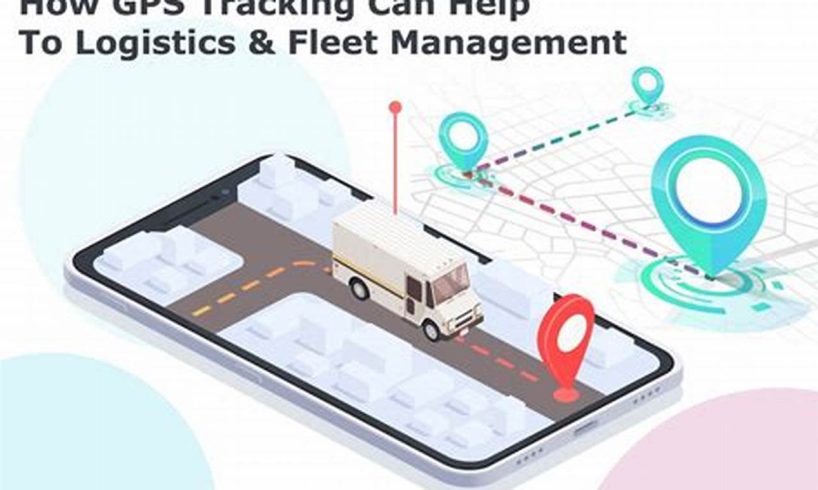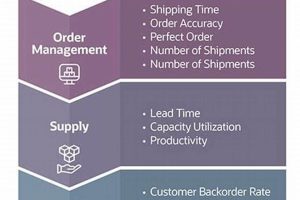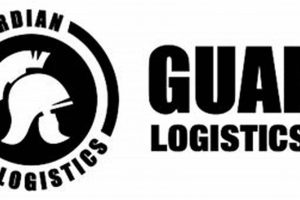
GPS tracking logistics involves the use of Global Positioning System (GPS) technology to track and monitor the movement and location of assets, vehicles, and personnel. It plays a crucial role in logistics and supply chain management, enabling businesses to optimize their operations, enhance visibility, and improve efficiency. By leveraging GPS tracking devices and software platforms, organizations can gain real-time insights into the whereabouts of their assets, allowing them to make informed decisions, respond promptly to changes, and mitigate risks.
The benefits of GPS tracking logistics are numerous. It helps businesses reduce operational costs by optimizing routes, minimizing fuel consumption, and improving vehicle utilization. It enhances customer service by providing real-time updates on delivery status and estimated arrival times. GPS tracking also improves safety and security by providing visibility into the location of valuable assets and deterring theft. Furthermore, it facilitates regulatory compliance by providing auditable data for tracking and reporting purposes.
The history of GPS tracking logistics can be traced back to the development of GPS technology in the 1970s. Initially used for military applications, GPS has since become widely adopted for commercial and consumer purposes. The integration of GPS with logistics operations began in the early 2000s, and its adoption has grown exponentially over the past two decades. Today, GPS tracking logistics is an indispensable tool for businesses of all sizes, enabling them to streamline their operations and gain a competitive advantage.
1. Real-time visibility
Real-time visibility is a key aspect of GPS tracking logistics. It refers to the ability to track and monitor the movement and location of assets, vehicles, and personnel in real time. This provides businesses with a comprehensive view of their operations, enabling them to make informed decisions, respond promptly to changes, and mitigate risks.
- Enhanced situational awareness
Real-time visibility provides businesses with a clear understanding of the location and status of their assets at any given time. This enhanced situational awareness enables them to make better decisions, such as rerouting vehicles to avoid traffic congestion or delays. - Improved customer service
Real-time visibility allows businesses to provide their customers with accurate and up-to-date information on the status of their orders. This improves customer satisfaction and loyalty. - Increased efficiency
Real-time visibility helps businesses identify and eliminate inefficiencies in their operations. For example, they can use GPS tracking data to optimize delivery routes and reduce fuel consumption. - Reduced costs
Real-time visibility can help businesses reduce costs by improving efficiency and reducing waste. For example, businesses can use GPS tracking data to identify areas where they can consolidate shipments or reduce the number of vehicles in their fleet.
Overall, real-time visibility is a powerful tool that can help businesses improve their operations, customer service, and profitability.
2. Route optimization
Route optimization is a key component of GPS tracking logistics. It involves the use of algorithms and software to determine the most efficient routes for vehicles to take, taking into account factors such as traffic conditions, road closures, and delivery schedules. Route optimization can significantly improve the efficiency of logistics operations, reducing fuel consumption, delivery times, and costs.
GPS tracking data is essential for effective route optimization. By tracking the location and movement of vehicles in real time, businesses can gain a clear understanding of traffic patterns and road conditions. This data can then be used to create optimized routes that avoid congestion and delays. Route optimization software can also take into account factors such as vehicle capacity, delivery time windows, and customer preferences to create the most efficient routes possible.
The benefits of route optimization are numerous. For example, a study by the American Trucking Association found that route optimization can reduce fuel consumption by up to 20%. Route optimization can also reduce delivery times by up to 15% and costs by up to 10%. In addition, route optimization can improve customer satisfaction by providing more accurate delivery time estimates and reducing the number of late deliveries.
Overall, route optimization is a powerful tool that can help businesses improve the efficiency of their logistics operations and gain a competitive advantage.
3. Fuel efficiency
Fuel efficiency is a key component of GPS tracking logistics. By tracking the location and movement of vehicles in real time, businesses can gain a clear understanding of fuel consumption patterns and identify areas where they can improve efficiency. GPS tracking data can be used to:
- Identify and eliminate inefficient driving habits, such as speeding, idling, and harsh braking.
- Optimize routes to avoid traffic congestion and delays, which can lead to reduced fuel consumption.
- Monitor fuel consumption in real time and identify vehicles that are consuming more fuel than expected.
Improving fuel efficiency can have a significant impact on a business’s bottom line. For example, a study by the U.S. Department of Energy found that a 10% improvement in fuel efficiency can save a trucking company $10,000 per year.
In addition to saving money, improving fuel efficiency can also reduce a business’s environmental impact. By consuming less fuel, vehicles produce fewer emissions, which can help to improve air quality and reduce greenhouse gas emissions.
Overall, fuel efficiency is a critical component of GPS tracking logistics. By tracking the location and movement of vehicles in real time, businesses can gain a clear understanding of fuel consumption patterns and identify areas where they can improve efficiency. This can lead to significant cost savings and environmental benefits.
4. Theft prevention
Theft prevention is a critical component of GPS tracking logistics. GPS tracking devices can be used to deter theft, track stolen assets, and recover stolen property.
GPS tracking devices can deter theft by making it more difficult for thieves to steal assets. Thieves are less likely to target assets that are equipped with GPS tracking devices because they know that the devices will make it easier for law enforcement to track down the stolen property.
If an asset is stolen, GPS tracking devices can be used to track its location. This information can be used by law enforcement to recover the stolen property and apprehend the thieves.
GPS tracking devices can also be used to recover stolen property even if the devices are not activated at the time of the theft. This is because GPS tracking devices store data on the location of the asset, which can be used by law enforcement to track down the stolen property.
The use of GPS tracking devices for theft prevention is becoming increasingly common. Businesses and individuals are using GPS tracking devices to protect a wide range of assets, including vehicles, equipment, and inventory.
Here are some real-life examples of how GPS tracking devices have been used to prevent theft and recover stolen property:
- In 2020, a construction company in California used GPS tracking devices to track its fleet of vehicles. When one of the vehicles was stolen, the company was able to use the GPS tracking device to track the vehicle’s location and recover it within 24 hours.
- In 2021, a farmer in Iowa used GPS tracking devices to track his herd of cattle. When several cows were stolen, the farmer was able to use the GPS tracking devices to track the cows’ location and recover them within a week.
- In 2022, a family in Florida used a GPS tracking device to track their boat. When the boat was stolen, the family was able to use the GPS tracking device to track the boat’s location and recover it within a few hours.
These are just a few examples of how GPS tracking devices can be used to prevent theft and recover stolen property. GPS tracking devices are a valuable tool for businesses and individuals who want to protect their assets from theft.
5. Improved customer service
In the realm of logistics, GPS tracking technology plays a pivotal role in enhancing customer service. By providing real-time visibility into the location and status of shipments, GPS tracking empowers businesses to deliver exceptional customer experiences.
- Accurate delivery updates
GPS tracking provides customers with precise and up-to-date information on the whereabouts of their orders. This transparency fosters trust and reduces anxiety, ensuring customers are well-informed throughout the delivery process.
- Proactive communication
With real-time tracking data, businesses can proactively identify potential delays or issues and promptly notify customers. This proactive approach enables customers to make informed decisions and adjust their plans accordingly, mitigating inconvenience.
- Reduced delivery times
GPS tracking optimizes delivery routes, minimizing travel time and maximizing efficiency. As a result, customers receive their orders faster, increasing satisfaction and loyalty.
- Enhanced order visibility
Customers can track their orders online or through mobile apps, providing them with complete visibility into the delivery process. This self-service option empowers customers and reduces the need for them to contact customer support for updates.
By leveraging GPS tracking logistics, businesses can transform their customer service, building stronger relationships, increasing customer satisfaction, and driving business growth.
6. Safety and security
In the realm of GPS tracking logistics, safety and security are of paramount importance. GPS tracking technology provides businesses with the means to enhance the safety and security of their assets, personnel, and operations.
- Theft deterrence
GPS tracking devices act as a deterrent to theft by making it easier for law enforcement to track and recover stolen assets. The real-time tracking capabilities of GPS devices make it difficult for thieves to dispose of stolen goods without being detected.
- Personnel safety
GPS tracking devices can be used to monitor the location of employees, especially those who work in remote or hazardous areas. In the event of an emergency, GPS tracking can help to locate and rescue employees quickly and efficiently.
- Vehicle safety
GPS tracking devices can be used to monitor the location and movement of vehicles. This information can be used to identify and address unsafe driving behaviors, such as speeding, harsh braking, and rapid acceleration. GPS tracking can also be used to track vehicle maintenance and repairs, ensuring that vehicles are safe to operate.
- Operational security
GPS tracking devices can be used to monitor the location and movement of goods and materials throughout the supply chain. This information can be used to identify and mitigate security risks, such as counterfeiting, theft, and diversion.
By leveraging GPS tracking logistics, businesses can significantly enhance the safety and security of their operations. GPS tracking technology provides businesses with the tools they need to protect their assets, personnel, and reputation.
7. Regulatory compliance
In the realm of GPS tracking logistics, regulatory compliance is of paramount importance. Businesses operating in the logistics industry are subject to a myriad of regulations aimed at ensuring the safety, security, and efficiency of their operations. GPS tracking technology plays a vital role in helping businesses meet these regulatory requirements.
- Electronic Logging Devices (ELDs)
ELDs are GPS-based devices that track and record the hours of service (HOS) of commercial vehicle drivers. ELDs are mandated by the Federal Motor Carrier Safety Administration (FMCSA) to ensure that drivers comply with HOS regulations and reduce the risk of driver fatigue. GPS tracking data from ELDs can also be used to improve fleet management and optimize driver schedules.
- Cargo tracking
GPS tracking devices can be used to track the location and movement of cargo throughout the supply chain. This information can be used to ensure that cargo is transported safely and securely and that it complies with customs regulations. GPS tracking can also be used to track the temperature and other environmental conditions of cargo, ensuring that it is handled properly and remains in good condition.
- Proof of delivery
GPS tracking devices can be used to provide proof of delivery for goods and services. This information can be used to resolve disputes with customers and ensure that businesses are paid for the goods and services they provide. GPS tracking can also be used to track the time and location of deliveries, providing businesses with valuable data for operational efficiency.
- Safety and security
GPS tracking devices can be used to improve the safety and security of logistics operations. GPS tracking can be used to track the location of vehicles and personnel, deter theft, and monitor the condition of cargo. GPS tracking can also be used to provide real-time alerts in the event of an emergency, helping to ensure the safety of drivers and cargo.
Overall, GPS tracking logistics plays a vital role in helping businesses comply with regulatory requirements and improve the safety, security, and efficiency of their operations.
8. Data analytics
Data analytics plays a crucial role in GPS tracking logistics, enabling businesses to extract valuable insights from the vast amount of data generated by GPS tracking devices. By analyzing this data, businesses can identify trends, patterns, and anomalies that would otherwise remain hidden.
One of the most important aspects of data analytics in GPS tracking logistics is the ability to optimize routes and schedules. By analyzing historical data on traffic patterns, weather conditions, and vehicle performance, businesses can determine the most efficient routes for their vehicles to take. This can result in significant savings on fuel costs and delivery times.
Data analytics can also be used to improve customer service. By tracking the location of vehicles in real time, businesses can provide customers with accurate and up-to-date information on the status of their deliveries. This can help to reduce customer anxiety and improve overall satisfaction.
In addition to these operational benefits, data analytics can also be used to improve the safety and security of GPS tracking logistics operations. By analyzing data on vehicle speeds, braking patterns, and other factors, businesses can identify and address unsafe driving behaviors. This can help to reduce the risk of accidents and improve the overall safety of logistics operations.
Overall, data analytics is a powerful tool that can be used to improve the efficiency, customer service, and safety of GPS tracking logistics operations. By leveraging the data generated by GPS tracking devices, businesses can gain valuable insights that can help them to make better decisions and improve their overall operations.
9. Competitive advantage
In today’s competitive business environment, companies are constantly looking for ways to gain an edge over their rivals. GPS tracking logistics can provide businesses with a number of competitive advantages, including:
- Improved efficiency: GPS tracking can help businesses improve the efficiency of their logistics operations by optimizing routes, reducing fuel consumption, and improving delivery times. This can lead to significant cost savings and improved profitability.
- Enhanced customer service: GPS tracking can help businesses improve their customer service by providing real-time visibility into the location of shipments. This allows businesses to keep customers updated on the status of their orders and to resolve any issues quickly and efficiently.
- Increased safety and security: GPS tracking can help businesses improve the safety and security of their logistics operations by tracking the location of vehicles and assets. This can help to deter theft and to recover stolen property.
- Improved compliance: GPS tracking can help businesses improve their compliance with regulatory requirements. For example, GPS tracking can be used to track the hours of service of drivers and to ensure that vehicles are properly maintained.
Overall, GPS tracking logistics can provide businesses with a number of competitive advantages. By leveraging the power of GPS tracking, businesses can improve their efficiency, customer service, safety, security, and compliance. This can lead to significant cost savings, improved profitability, and a stronger competitive position.
FAQs on GPS Tracking Logistics
This section addresses frequently asked questions (FAQs) about GPS tracking logistics, providing clear and concise answers to common concerns and misconceptions.
Question 1: What is GPS tracking logistics?
Answer: GPS tracking logistics utilizes Global Positioning System (GPS) technology to monitor the real-time location and movement of assets, vehicles, and personnel involved in logistics and supply chain management.
Question 2: What are the benefits of GPS tracking logistics?
Answer: GPS tracking logistics offers numerous benefits, including enhanced visibility, route optimization, fuel efficiency, improved customer service, increased safety and security, regulatory compliance, and competitive advantage.
Question 3: How does GPS tracking logistics improve efficiency?
Answer: GPS tracking enables businesses to optimize routes, minimize fuel consumption, and improve vehicle utilization, leading to increased efficiency and reduced operating costs.
Question 4: How does GPS tracking logistics enhance customer service?
Answer: GPS tracking provides real-time updates on delivery status and estimated arrival times, allowing businesses to keep customers informed and resolve any issues promptly, resulting in improved customer satisfaction.
Question 5: How does GPS tracking logistics contribute to safety and security?
Answer: GPS tracking enhances safety by providing visibility into vehicle locations, deterring theft, and facilitating emergency response. It also improves security by tracking the movement of valuable assets and mitigating risks.
In summary, GPS tracking logistics plays a vital role in modern supply chain management, offering a range of benefits that enhance efficiency, customer service, safety, security, and compliance. Its adoption can lead to significant improvements in logistics operations and contribute to a competitive advantage in the business landscape.
For further inquiries or specific implementation guidance, it is recommended to consult with industry experts or technology providers specializing in GPS tracking logistics solutions.
GPS Tracking Logistics Tips
Harness the power of GPS tracking logistics to optimize your supply chain and achieve operational excellence.
Tip 1: Optimize Routes for Efficiency
Utilize GPS data to analyze traffic patterns and road conditions, enabling you to determine the most efficient routes for your vehicles. This can result in reduced fuel consumption, lower operating costs, and improved delivery times.
Tip 2: Enhance Customer Service
Provide your customers with real-time updates on the location of their shipments. This transparency fosters trust and reduces anxiety, leading to increased customer satisfaction and loyalty.
Tip 3: Prioritize Safety and Security
Monitor the location of your vehicles and assets in real-time. This visibility deters theft, facilitates emergency response, and ensures the safety of your drivers and cargo.
Tip 4: Ensure Regulatory Compliance
Leverage GPS tracking to meet industry regulations and standards. Track driver hours of service, monitor vehicle maintenance, and maintain accurate records for proof of delivery, ensuring compliance and mitigating risks.
Tip 5: Gain Data-Driven Insights
Analyze the data generated by GPS tracking devices to identify trends, patterns, and areas for improvement. This data-driven approach empowers you to make informed decisions and continuously enhance your logistics operations.
Tip 6: Improve Fleet Management
Track vehicle performance, fuel consumption, and driver behavior. This information allows you to identify areas for improvement, optimize maintenance schedules, and promote safe driving practices.
Tip 7: Reduce Environmental Impact
Optimize routes and improve vehicle utilization to minimize fuel consumption and reduce greenhouse gas emissions. GPS tracking logistics supports sustainable practices and contributes to environmental conservation.
Tip 8: Gain a Competitive Advantage
By leveraging GPS tracking logistics, you can differentiate your business, improve efficiency, enhance customer service, and mitigate risks. This translates into a competitive advantage in the dynamic logistics landscape.
In conclusion, implementing GPS tracking logistics provides a wealth of benefits that can transform your supply chain operations. By following these tips, you can optimize efficiency, enhance customer service, prioritize safety, ensure compliance, gain data-driven insights, and achieve a competitive edge in the industry.
GPS Tracking Logistics
In conclusion, GPS tracking logistics has emerged as a transformative technology that revolutionizes supply chain management. Its ability to track and monitor the movement of assets, vehicles, and personnel in real-time provides businesses with unprecedented visibility, efficiency, and control over their operations.
By harnessing the power of GPS tracking, businesses can optimize routes, reduce costs, enhance customer service, improve safety and security, ensure regulatory compliance, and gain a competitive advantage. This technology empowers businesses to make data-driven decisions, mitigate risks, and continuously improve their logistics operations.
As the logistics industry continues to evolve, GPS tracking logistics will undoubtedly play an increasingly critical role. Its potential to further enhance efficiency, sustainability, and customer satisfaction is vast. By embracing this technology, businesses can position themselves for success in the dynamic and ever-changing world of supply chain management.






